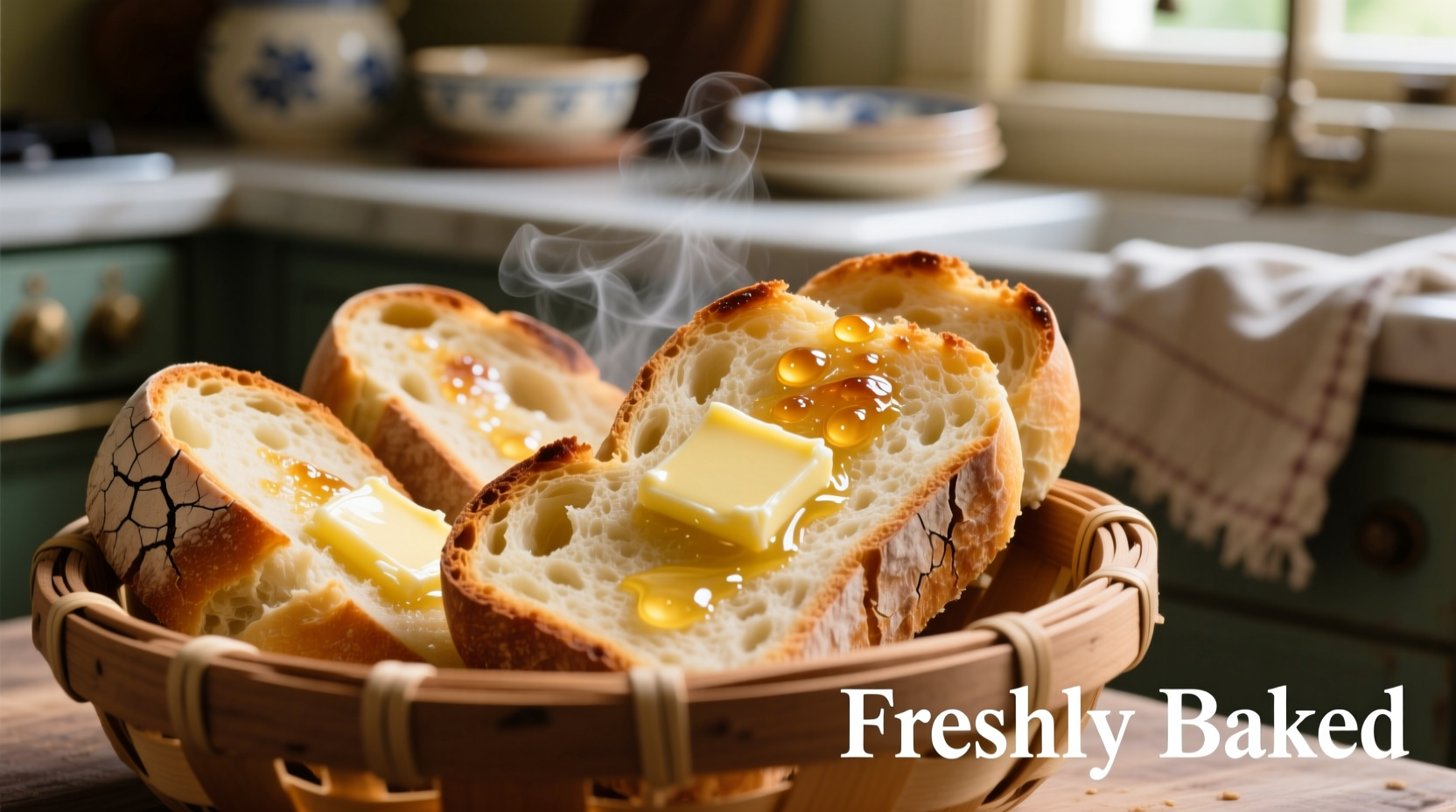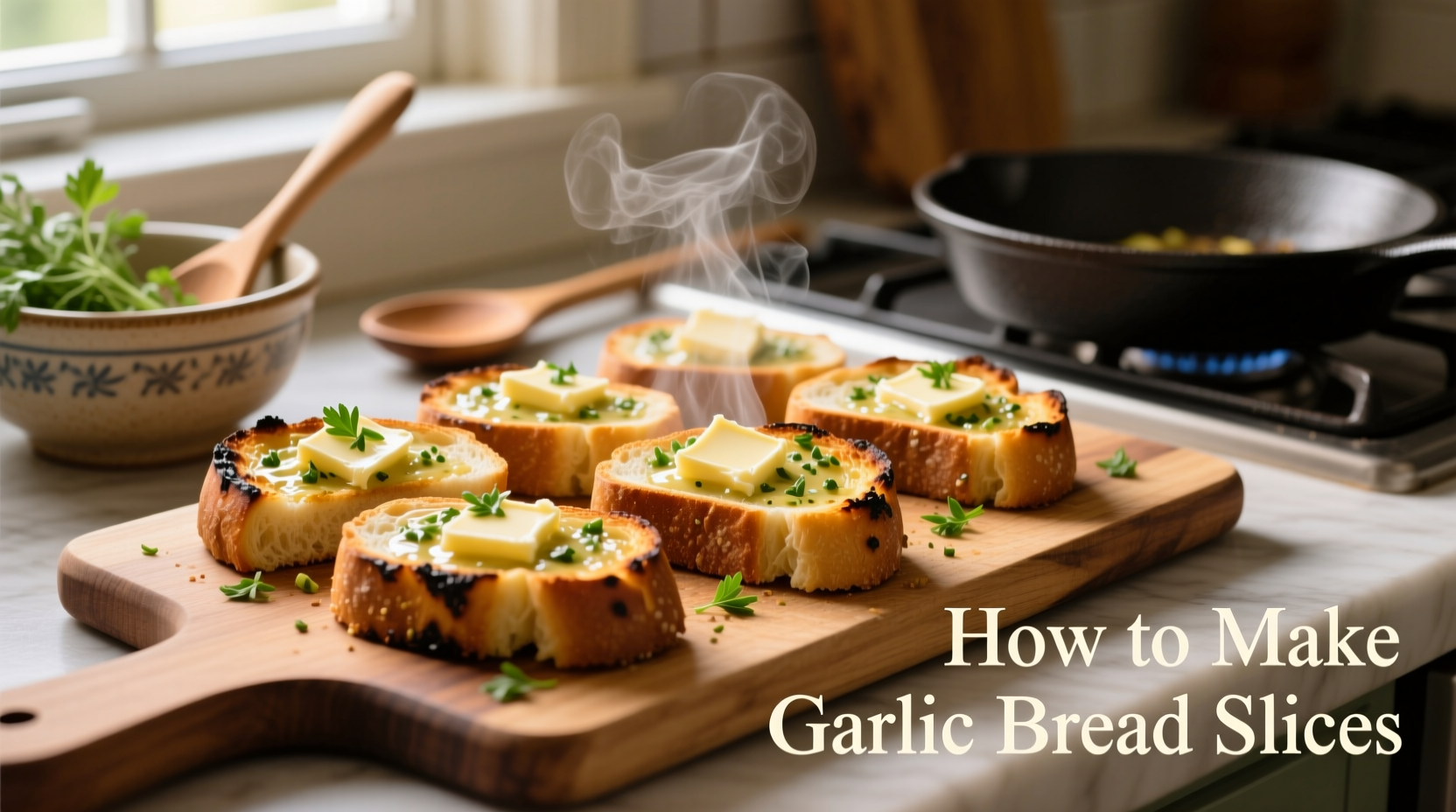Why This Garlic Bread Method Works Better
Most home cooks struggle with soggy or unevenly toasted garlic bread. The secret lies in proper garlic preparation and controlled baking. Unlike recipes that use raw garlic (which burns easily) or pre-made spreads (lacking freshness), this method extracts maximum flavor while preventing bitterness.
Essential Ingredients Checklist
Quality ingredients make the difference between ordinary and exceptional garlic bread. Here's what you'll need for 8 perfect slices:
- 1 French baguette (preferably day-old)
- 4 tablespoons unsalted butter, softened
- 3 large garlic cloves, finely minced
- 2 tablespoons fresh parsley, finely chopped
- 1/4 teaspoon sea salt
- 1/4 teaspoon black pepper
| Bread Type | Best For | Avoid If |
|---|---|---|
| Day-old baguette | Crispy texture, holds shape | You need immediate use |
| Fresh baguette | Softer interior | You want maximum crispness |
| Sourdough loaf | Tangy flavor profile | You prefer traditional taste |
Step-by-Step Preparation Guide
1. Prepare the Garlic Butter Spread (5 minutes)
Mix softened butter, minced garlic, parsley, salt, and pepper in a small bowl. Let the mixture rest for 5 minutes to allow flavors to meld. According to the FDA Food Safety Guidelines, this resting period helps distribute garlic compounds evenly while reducing the risk of burning.
2. Slice and Score the Bread (3 minutes)
Cut the baguette into 1/2-inch thick slices without cutting all the way through. Create a "hinge" by stopping 1/4 inch from the bottom. This professional technique ensures even heat distribution while keeping slices intact. Professional bakers at the King Arthur Baking Institute recommend this method for optimal surface area exposure.
3. Apply the Garlic Butter (2 minutes)
Spread the garlic butter mixture between each slice, working from the center outward. Use all the butter - this isn't the place to skimp. Proper butter distribution prevents dry spots and ensures consistent flavor throughout.
4. Bake to Perfection (10-12 minutes)
Place the prepared loaf on a baking sheet and bake at 375°F (190°C). After 5 minutes, rotate the pan for even browning. The USDA Cooking Temperature Guidelines recommend internal bread temperatures of 190-200°F for optimal texture. Remove when golden brown and crisp at the edges.

Pro Tips for Restaurant-Quality Results
- Garlic preparation: Press garlic cloves with the flat side of a knife before mincing to release more flavor compounds
- Butter temperature: Use room-temperature butter for smooth spreading without tearing bread
- Baking surface: Line your baking sheet with parchment paper to prevent sticking and simplify cleanup
- Finishing touch: Sprinkle with grated Parmesan during the last 2 minutes of baking for extra flavor
Common Mistakes to Avoid
Even experienced cooks make these garlic bread errors:
- Using pre-minced garlic from jars (lacks freshness and contains preservatives)
- Applying too much butter (causes sogginess)
- Baking at too high temperature (burns garlic before bread toasts)
- Using fresh bread (higher moisture content prevents proper crisping)
Storage and Reheating Instructions
Store leftover garlic bread in an airtight container at room temperature for up to 2 days. For longer storage, freeze in a single layer then transfer to freezer bags. The USDA Food Safety Charts recommend consuming frozen garlic bread within 1 month for best quality.
To reheat: Place slices on a baking sheet and warm in a 350°F oven for 5-7 minutes. Avoid microwaving, which creates a rubbery texture. For frozen slices, add 2-3 minutes to the reheating time.
Flavor Variations to Try
Once you've mastered the basic technique, experiment with these popular variations:
- Cheesy garlic bread: Add 1/4 cup shredded mozzarella between slices
- Herb-infused: Mix in 1 teaspoon dried oregano or basil with the butter
- Spicy kick: Include 1/4 teaspoon red pepper flakes
- Truffle version: Replace 1 tablespoon butter with truffle butter
Frequently Asked Questions
Can I make garlic bread slices without an oven?
Yes, you can prepare garlic bread slices using a toaster oven or air fryer. For toaster ovens, follow the same preparation steps and bake at 350°F for 8-10 minutes. In an air fryer, cook at 320°F for 5-7 minutes, checking frequently to prevent burning. Both methods produce excellent results with proper temperature control.
How do I prevent garlic from burning when making garlic bread?
To prevent burned garlic, always use fresh minced garlic rather than pre-minced varieties, mix it thoroughly with softened butter to distribute evenly, and bake at 375°F or lower. The FDA recommends not exceeding 375°F when cooking garlic-containing foods to avoid bitter compounds forming. Another effective technique is to add half the garlic before baking and sprinkle the remaining half during the last two minutes of cooking.
What's the best bread for making garlic bread slices?
The best bread for garlic bread slices is a day-old French baguette. Its firm texture holds up well to slicing and toasting while maintaining a soft interior. According to professional bakers at the King Arthur Baking Institute, day-old bread has slightly reduced moisture content, which helps achieve the perfect crispy exterior without becoming soggy when butter is applied. Avoid using very fresh bread as it contains too much moisture, and steer clear of enriched breads like brioche which can burn easily.
Can I prepare garlic bread slices ahead of time?
Yes, you can prepare garlic bread slices up to 24 hours in advance. Complete all preparation steps except baking, then wrap tightly in plastic wrap and refrigerate. When ready to serve, bake according to instructions, adding 2-3 minutes to the baking time since the bread will be cold. For best results, don't apply the garlic butter more than 24 hours ahead as the garlic flavor will become overly strong and potentially bitter.
Why does my garlic bread turn out soggy?
Garlic bread becomes soggy primarily due to three reasons: using fresh rather than day-old bread (higher moisture content), applying too much butter, or wrapping the bread while still hot after baking. The USDA Food Safety guidelines note that trapping steam in freshly baked bread creates condensation that leads to sogginess. To prevent this, always use slightly stale bread, measure butter carefully (4 tablespoons for a standard baguette), and allow bread to cool slightly on a wire rack before serving.











 浙公网安备
33010002000092号
浙公网安备
33010002000092号 浙B2-20120091-4
浙B2-20120091-4